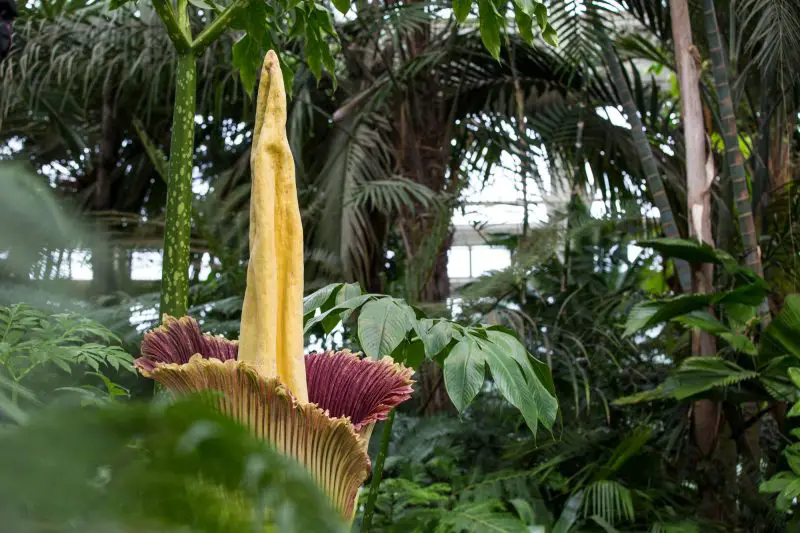The world’s stinkiest flower, the Amorphophallus titanum (Titan Arum) or as it is more commonly called the Corpse Flower, began its bloom Thursday afternoon at the New York Botanical Garden. The bloom, which rarely occurs in cultivation, has a smell similar to rotting meat.
Blooming of the Corpse Flower
The unusual – and enormous – flower is native only to the rainforests of Sumatra, Indonesia.
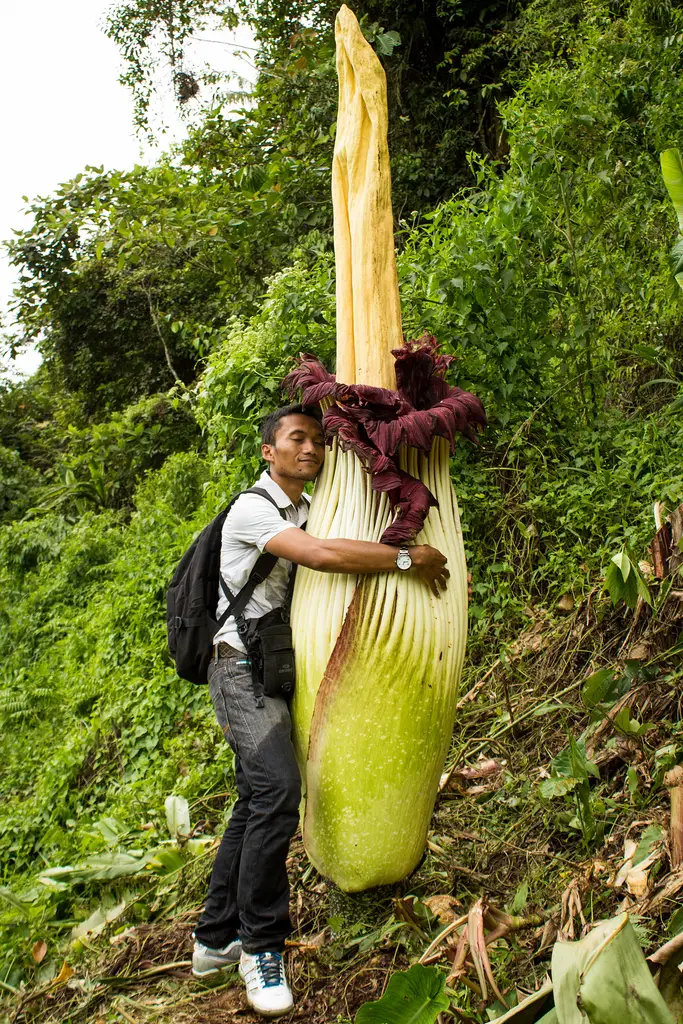
In cultivation, the titan arum generally requires 7–10 years of vegetative growth before blooming for the first time. After its initial blooming, there can be considerable variation in blooming frequency. Some plants may not bloom again for another 7–10 years while others may bloom every two to three years.
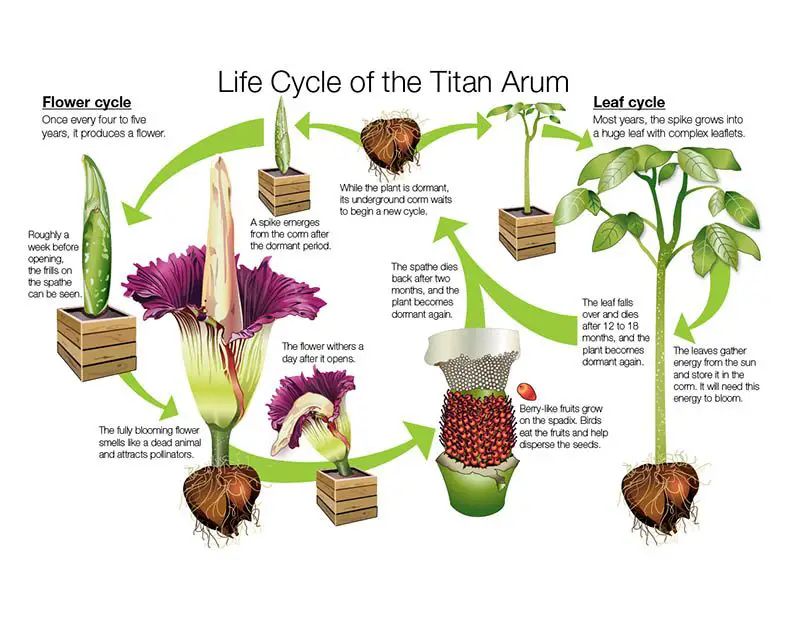
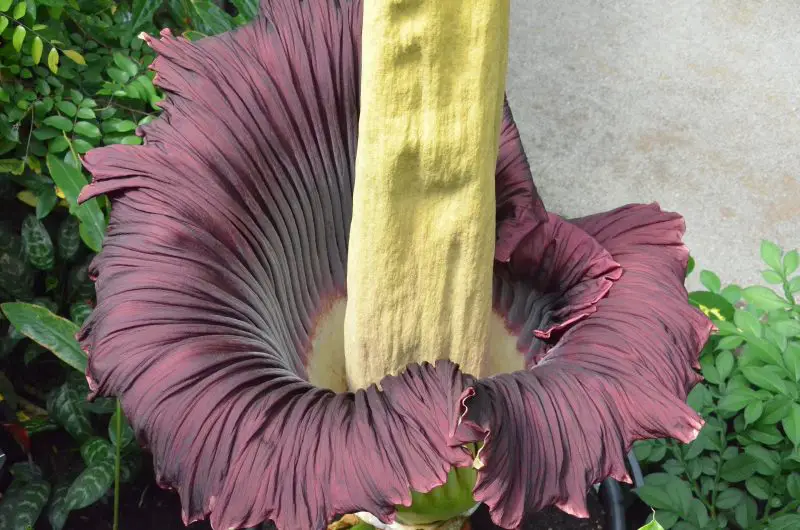
The stench let off by the large and unusual looking plant is the clever ploy it has evolved to attract pollinators, insects which feed on dead animals or lay their eggs in rotting meat.
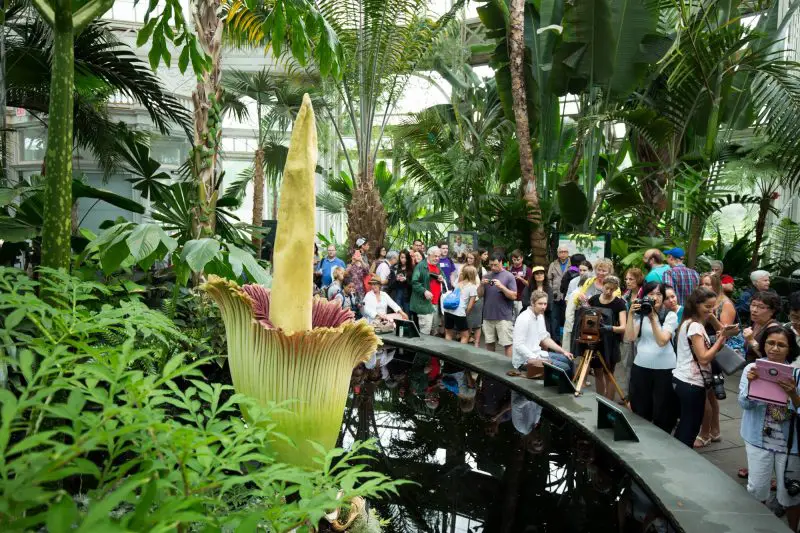
During bloom, the tip of the spadix is approximately that of the human body temperature, which helps the perfume volatilize; this heat is also believed to assist in the illusion that attracts carcass-eating insects.
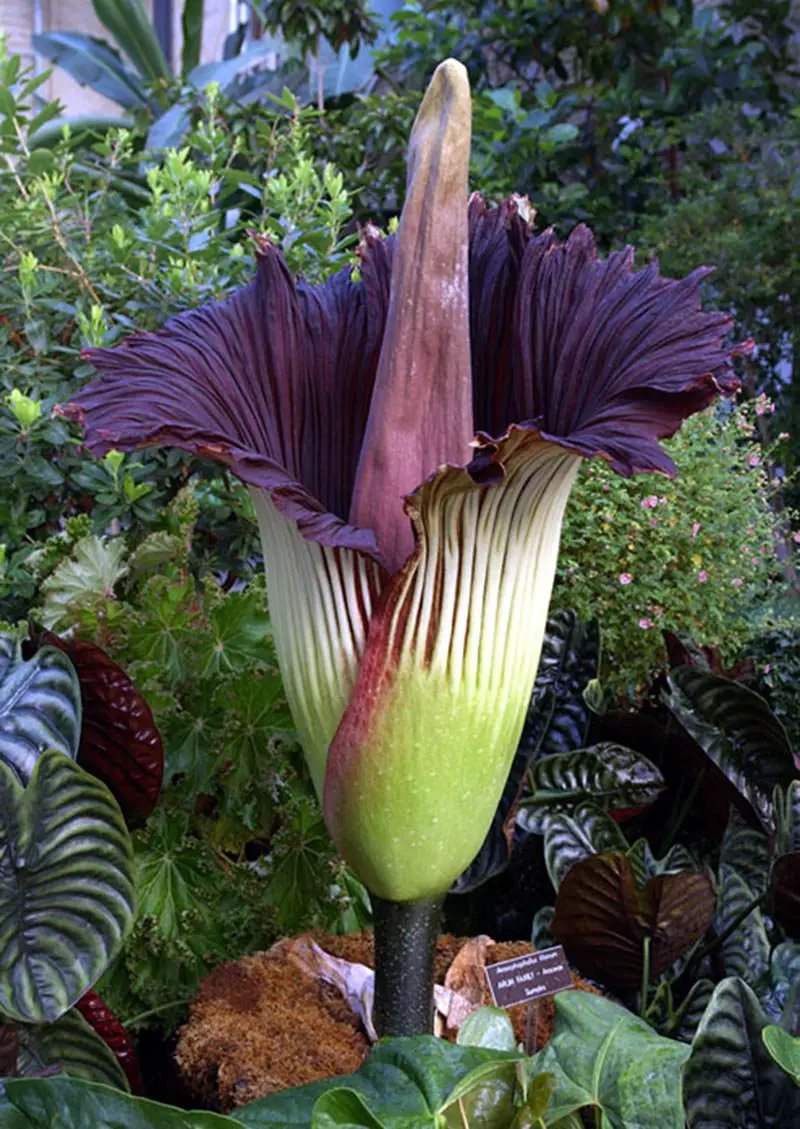
Both male and female flowers grow in the same manner. The female flowers open first, then a day or two following, the male flowers open. This usually prevents the flower from self-pollinating.
There are several now in cultivation in Botanical Gardens all over the world. If you are wondering where, here is a list.
Here is a time-lapse video of the blooming of the Corpse Flower:
According to the NYBG blog, scientists have devoted no small effort to identifying the complex chemistry that combines to produce the corpse flower’s distinctive aroma. That bouquet of rotting flesh? It’s dimethyl disulfide and trimethylamine. The accent of sweaty socks? That’s isovaleric acid. And the not-so-subtle hint of limburger cheese? Dimethyl trisulfide, of course.
Intended to bloom through Thursday, you can get a live look at it through the New York Botanical Gardens’ live cam.
